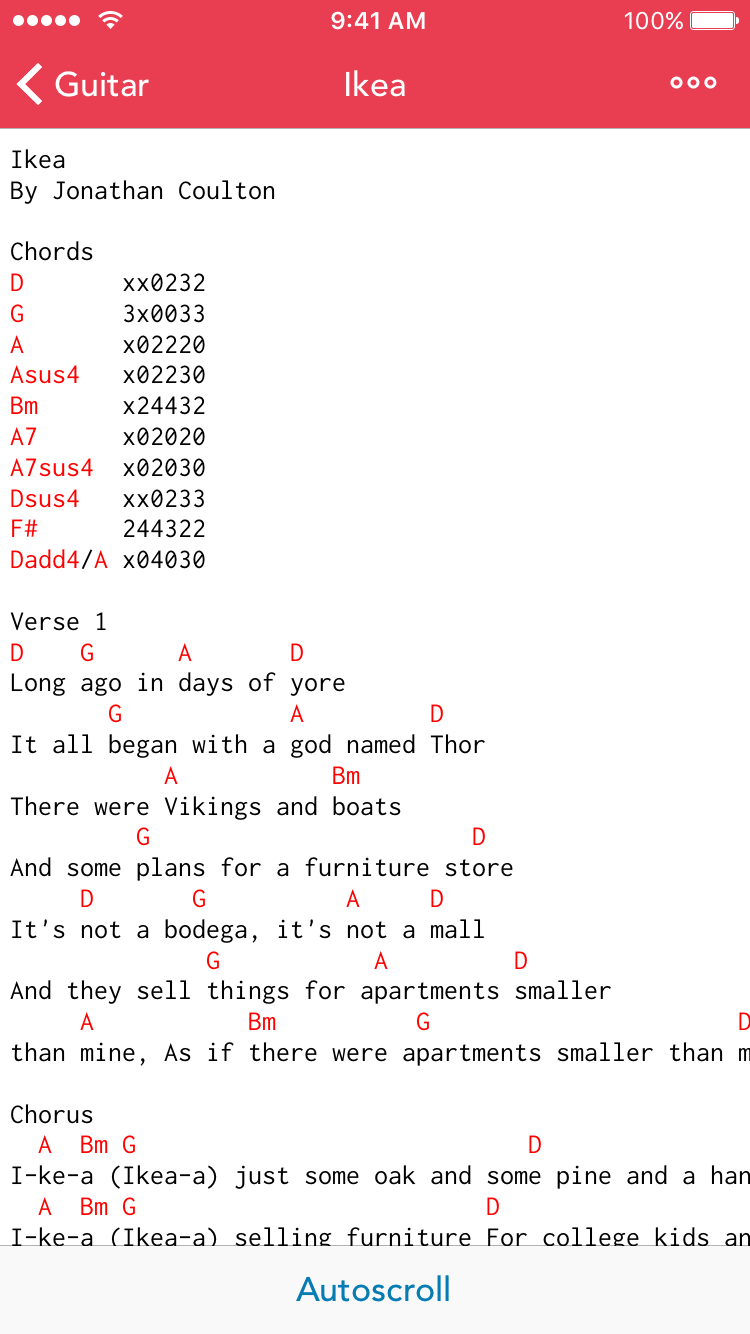14 Ways to Practice Guitar on a Business Trip (Without Bringing a Guitar)
Background: You’re flying out to Chicago this week from Los Angeles for 2 days. The trip is for business and is a relatively quick turnaround. Unfortunately, it’s not convenient to bring your guitar along on the trip. So what’s the best way to keep up some practice time on the road?
There’s actually quite a few ways to practice guitar and music without actually having a guitar in hand.
The List
1. Visit a music store: If you’re near a music store, go in and spend 20 minutes practicing on one of their guitars. It’s also a great chance to try out some new guitars, amps, and pedals.
2. Research a new song: We often skip the research part of learning a new song and jump right into trying to play it. So spend some time looking online for the highest quality and best rated tabs/videos/articles related to your song. Putting down the guitar for a few minutes and focusing on gathering the best material may actually be the fastest way to learn that song.
And you don’t need a computer for this, you can do it in the airport. Just use one of the popular Tab apps on your phone: "Top 7 Guitar Tab Apps for iOS and Android".
3. Find some inspiration: Take a look at some new guitar website and blogs. There are great sources out there and a simple Google search can get you there. Try to keep an open mind and learn about a new style or read up on a new player. You can get some ideas here or here.
4. Visit a live show: Go to a local gig, or to a big performance. I’m usually more interested in seeing the small, local gig because you can get closer, hear more local flavor, and pay a little less. But if you’re in a major city, there’s often a big ticket show that you can plan for.
One of the best musical experiences I’ve had recently was seeing a big band play in a half-empty Seattle bar. The band took up half the room in the place!
5. Watch YouTube videos for technique: The unique dimension of researching guitar on YouTube, of course, is be able to see how people actually play something. Look up some techniques that you aren’t familiar with and see how experts actually make them happen. Travis fingerpicking, anyone? Or maybe some double-handed tapping?
For a more organized approach, you can also take some videos lessons from places like JamPlay.com or ArtistWorks.com.
6. Find a podcast: Look for podcasts pertinent to your playing style. Lots of folks, from the major guitar companies to individual teachers, have high-quality, weekly podcasts.

You can find some inspiration here, don’t forget to check the comments at the bottom.
7. Read an instructional book: Guitarists suffer from a problem: We can’t think and hold a guitar at the same time. (Actually, my wife says I can’t listen and hold a guitar at the same time). Take some time without the guitar in hand to read through your instructional material, even if it’s something as “unreadable” as a jazz scale book. You may absorb more than when you’re reading it with guitar in hand.
8. Bring along a piece of music and mentally envision playing it: Athletes, CEOs, public speakers, and actors all practice this. Read through the notes or tab and picture yourself playing through the song, start to finish. Studies show that envisioning yourself being successful at an activity translates to higher actual success rates.
9. Do some self-analysis: Think through the last few weeks of practice and think about what you practiced. When did you practice? How much time did you spend? What was effective? What would you like to begin? Jot down some notes and come up with recommendations for improving when you get back home. This is particularly effective if you’ve been keeping a practice journal.
10. Create a list of your “repertoire”: Odds are that you know how to play quite a few songs. But sometimes we struggle to remember them all, especially when we’re on the spot in front of an audience. Just the act of writing down a list will help you memorize your own repertoire. And as you get going you’ll likely have a few “Oh yeah!” moments where you remember some oldies that you haven’t played in a while.

You can also use an app like Practice Book to quickly import your repertoire (or stuff you’re woodshedding) into a central location.
11. Create an “Ideal Week” of practice and performance: What would the perfect practice session look like? How much time would you spend on scales vs. learning new material? How many times would you play out during a week in your ideal life? Geek out and use an Excel spreadsheet to organize what you want to practice on which days.
12. Research gear: Some people love getting new gear and don’t need to be encouraged on this front. Others may need a little push. Research is especially helpful if you’re moving into new territory: beginning to record, crossing over from acoustic to electric, getting into a new style, etc. See what’s out there. Not sure where to start? Check out TheGuitarJournal.com archives or head over to Amazon to look at the top sellers.
13. Find new gigs in your local area: In the business world, this is called market research. Check out restaurants, bars, farmer’s markets, churches, and festivals where you might be able to get some local exposure. Get the contact info for a few new possibilities and get in touch with them.
14. Study some theory: Consider taking time to study some theoretical music concepts. In addition to the reading, do some homework. Try analyzing the harmonic structure of a piece, or analyzing what the tones are the “landing notes” of a particular solo are in a piece.
Warning:
These type of musical investments tend to fall to the bottom of our ‘to do’ lists. They hide under the bigger ticket items on our lists, like playing and performing. Or more likely under non-negotiable responsibilities like work and kids.
But now is the perfect time, when you don’t have a guitar in hand, to put some time into them. So make it happen!
